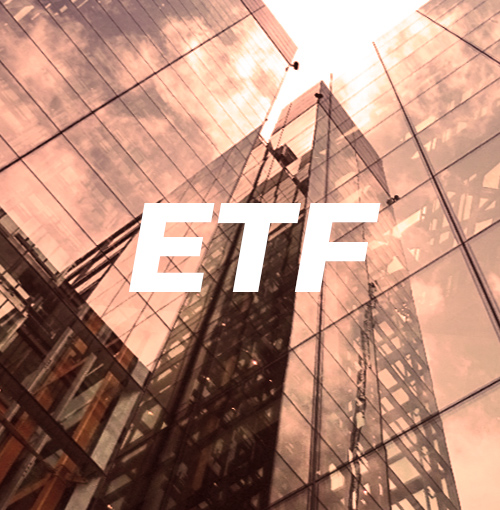
Mutual Funds and ETFs: A Comparative Insight
At Investora, we believe that every smart investment decision begins with knowledge. To aid you in this endeavor, let's dive deep into the world of Mutual Funds and ETFs, two premier investment options that have caught the attention of many. By the end of this guide, you'll understand their intricacies, similarities, differences, and which might suit your investment needs better.
Pooled Investment Vehicles:
Mutual funds and ETFs ride on the idea of pooled fund investing. This mechanism involves amalgamating several securities, ensuring that investors tap into the perks of a diversified portfolio. This collective fund approach not only promises diversification but also introduces economies of scale. This, in turn, empowers fund managers to cut down transaction costs courtesy of large-scale share transactions using the consolidated investment capital.
Key Points:
Both mutual funds and ETFs provide a collective investment gateway.
Mutual funds lean more towards intricate structures, with diverse share classes and fee models.
ETFs often attract investors due to their adherence to market indices. In contrast, the allure of mutual funds lies in their extensive array of actively managed funds.
ETFs experience active trading during the business hours, whereas mutual fund trades culminate at the day’s end.
Mutual funds usually adopt an active management approach, whereas ETFs predominantly favor passive management.
Pooled Investment Vehicles:
At their core, both Mutual Funds and ETFs represent collective investment schemes. This means they pool together money from numerous investors to purchase a diversified set of assets.
Interesting Fact: Did you know the first-ever mutual fund was established in 1924, while the debut of ETFs wasn’t until 1993?
Diving into Mutual Funds
The Pioneers of Pooled Investments
Before delving into specifics, it's crucial to appreciate the historical role of mutual funds. Their birth was a solution to a major investment hurdle - providing investors, irrespective of their financial heft, access to diversified portfolios.
Tracing back to 1924 with MFS Investment Management pioneering the first U.S. mutual fund, these funds have been presenting an expansive array of pooled fund opportunities. While there’s a segment of passively managed mutual funds, their active counterparts catch the eye of investors seeking an edge. This edge is attributed to the value addition of seasoned professionals handcrafting an optimal portfolio rather than blindly mirroring an index.
Actively Curated Portfolios:
What separates mutual funds from many other investment tools is the active management component. An expert team or manager curates a portfolio, aligning it not just to track an index but often to outperform it. This unique feature can lead to varied results:
- Potential Outperformance: A well-managed fund might beat the market average.
- Diverse Options: From sector-specific funds to global portfolios, the options are vast.
- Fee Structures: Active management incurs higher fees, often justified by the potential of higher returns.
Tip: When selecting a mutual fund, always weigh the potential returns against the fees charged. Higher fees do not always translate to better performance.
The Allure of ETFs
Modern Marvels of Investment Engineering
Exchange Traded Funds or ETFs can be seen as the modern response to the changing investment landscape. Catering to a new breed of investors seeking agility and transparency, ETFs brought some game-changing features to the table.
Making their debut in 1993 to mirror the S&P 500 index, ETFs saw a meteoric rise, boasting over 3,400 variants by 2017's end. Initially, regulations mandated a passive management style. However, the landscape shifted post-2008 when the SEC (Securities and Exchange Commission) greenlighted actively managed ETFs.
Passive Management:
Unlike their mutual fund counterparts, most ETFs track a specific index. This strategy of passive management ensures that the investment mirrors the performance of the selected index.
- Flexibility: ETFs can be traded throughout the trading day, much like stocks.
- Lower Fees: Absence of active management often results in lower fees.
- Tax Efficiency: ETFs can be more tax-efficient due to their unique structure.
Tip: ETFs are excellent tools for investors keen on specific market sectors or indices. They provide instant diversification, even with minimal investment.
Regulatory Framework
Post the 1929 market debacle, mutual funds and ETFs are chiefly regulated under three pivotal securities legislations:
- Securities Act of 1933
- Securities and Exchange Act of 1934
- Investment Company Act of 1940
Despite the shared regulatory environment and core concept, mutual funds and ETFs exhibit distinct differences tailored to specific investor preferences.
Tax Implications – A Closer Look
Both Mutual Funds and ETFs come with tax implications. It's a realm where ETFs may have an edge due to their unique "in-kind" creation and redemption mechanism.
All investments come with tax implications, and these funds are no exception. Profits realized from selling shares can attract either short-term (for holdings <1 year) or long-term capital gains tax. Dividends, too, can be taxed based on their type – ordinary or qualified.
Remember: Mutual funds often have heightened tax implications due to their capital gains distributions. ETFs, by avoiding such distributions, can offer tax efficiencies.
However, for investors with tax-advantaged accounts like 401(k)s, these distinctions blur. Such accounts often provide tax-deferred contributions and growth, negating the immediate tax impact.
Summary
Both mutual funds and ETFs offer enticing pathways for investors. While mutual funds promise the expertise of active management, ETFs provide flexibility with real-time trading. The choice ultimately rests on the investor's goals, risk appetite, and investment horizon.
Whether you're leaning towards the active allure of mutual funds or the passive appeal and tax efficiencies of ETFs, understanding their nuances is crucial. Your choice should align with your investment horizon, risk tolerance, and financial goals.
- Share this article





